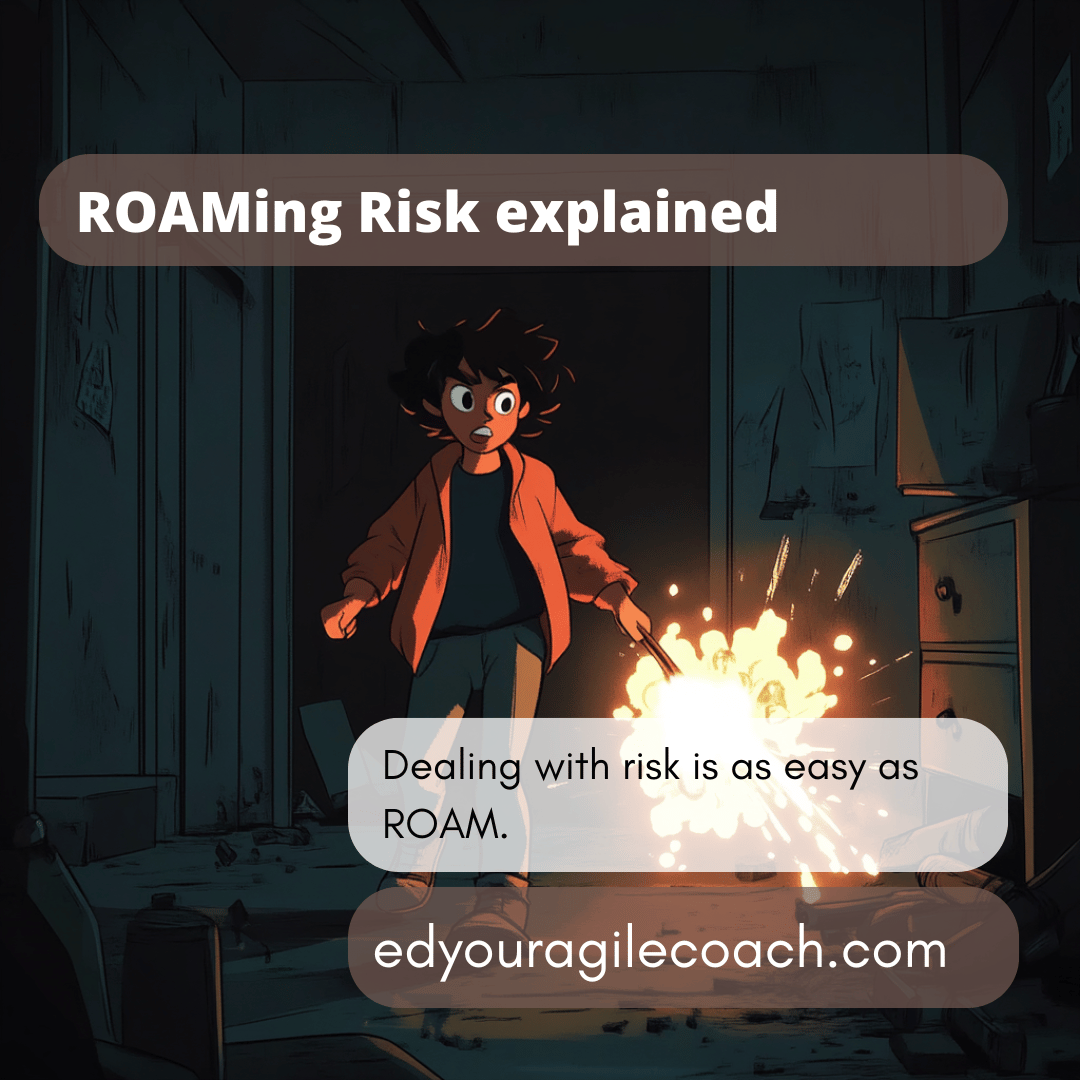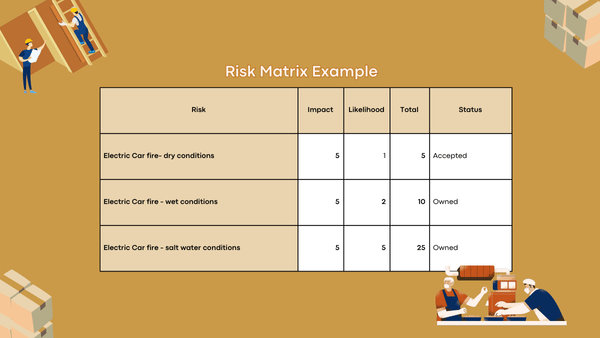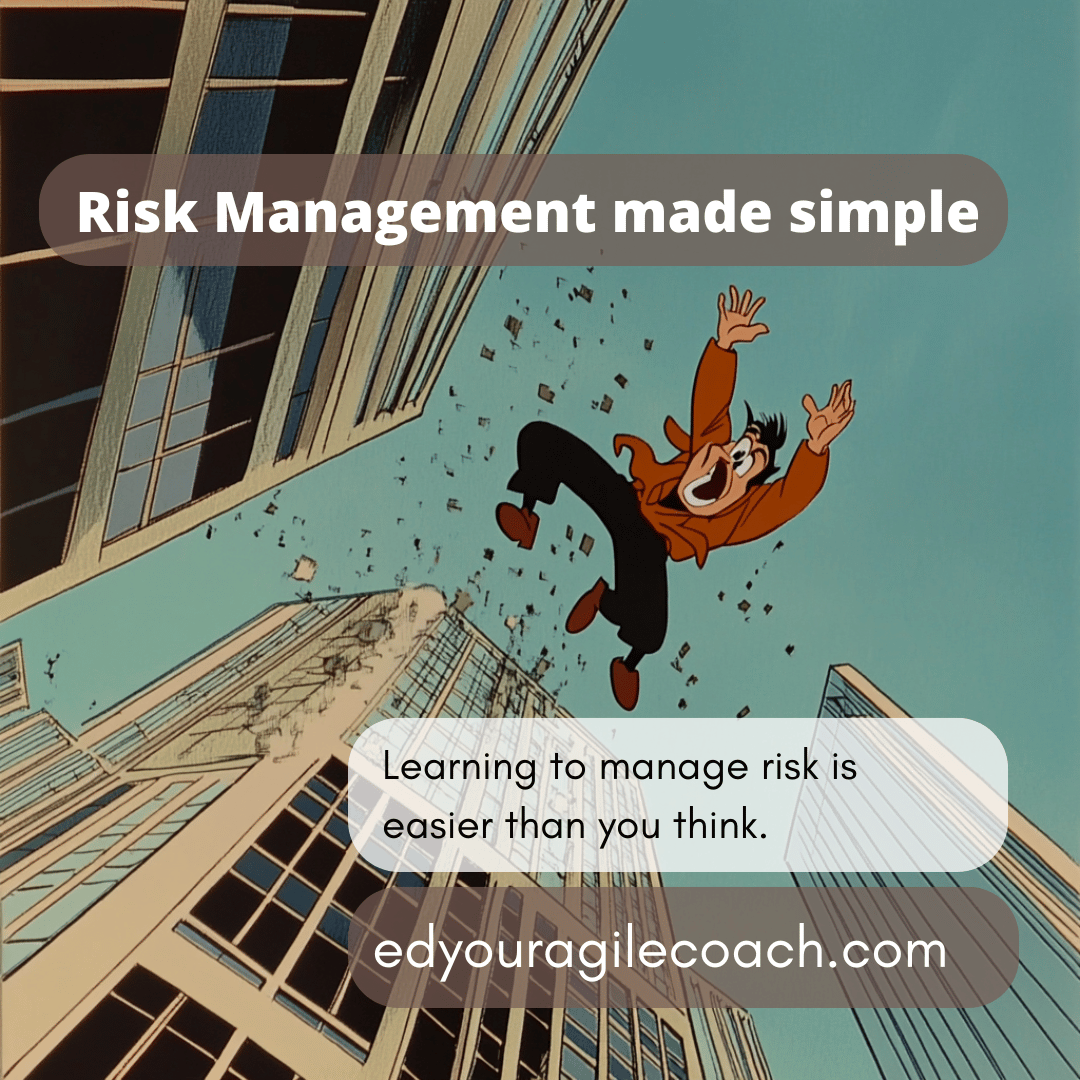ROAM if you want to deal with risk management.

Last week, I discussed some of the basics of risk management and how it works from the perspective of the project management institute. Being able to weigh risks allows you to prioritize them for the future. The PMI institutions are unclear about what to do with the prioritized risks. Today, I will share some concepts from the Scaled Agile Framework (SAFe) to explain a few approaches to dealing with risk.
Blogger Emily Paterson says that good risk management is like insurance. It is an expense, but it helps avoid financial disaster if something goes wrong. Each risk you find and identify requires some attention and thought. Last week, I was looking at the fire risk of electric vehicles. You can then calculate risk priority by multiplying the likelihood of the risk by its impact. The product of that calculation allows you to decide what is essential and what can wait. Below is a sample risk matrix used in a project.

A risk matrix is an excellent way to prioritize a risk, but what do you do with it once you have prioritized it? Scaled Agile Framework for the Enterprise uses an approach called ROAM.
The acronym stands for resolved, owned, accepted, and mitigated. Each approach has a specific purpose. By resolving a risk, we ensure it no longer harms the project's success. For example, a labor strike can jeopardize a project. However, signing a new union contract reduces this risk. Project managers and engineers spend most of their careers mitigating risks.
The subsequent risk approach is ownership. If the team cannot solve or mitigate risk within a meeting, it is prioritized and then assigned to a team member to minimize the risk and create a contingency plan if it happens. A good example is in the manufacturing business. Suppose you rely on a particular type of resin to produce your product. Suppose the vendor has struggled to deliver the resin on time to one of the plants over the last six months. The plant manager decided to own that risk and find an alternative vendor to help provide resin. When a vendor fails to meet a delivery deadline, the plant manager switches to another vendor. Most risks are in the ownership state.
A risk accepted is a risk the team cannot solve and must deal with when it crops up. Government regulations, natural disasters, and acts of God often fall into this category. For instance, an asteroid can collide with Earth and extinguish all life. The impact is catastrophic, but the likelihood is less than one in ten thousand. Most project managers will accept the risk of an asteroid strike. A more credible example is an election in the city hall. The challenger promises stricter enforcement of building codes due to a public tragedy related to a building fire. An intelligent project team would accept that fire safety will receive more scrutiny if the challenger wins the election.
The final letter in the acronym is mitigating. A mitigated risk is one where a plan is in place if the risk occurs. Suppose you are planning an outdoor wedding. An intelligent wedding planner will have a strategy for rain if it happens. Maybe a circus tent where the bride can move the activity or a venue nearby where the wedding or reception can relocate when thunder strikes.
Risk resolution, ownership, acceptance, and mitigation are crucial to dealing with possible threats to a project's completion. While you may never use these strategies, they act like the insurance policy program Emily Peterson mentioned. Take time to prioritize your risks and ROAM them because not having a plan leads to failure.
Until next time, have a great Thanksgiving.
A cheerful song about travel. Happy Thanksgiving.


Comments ()